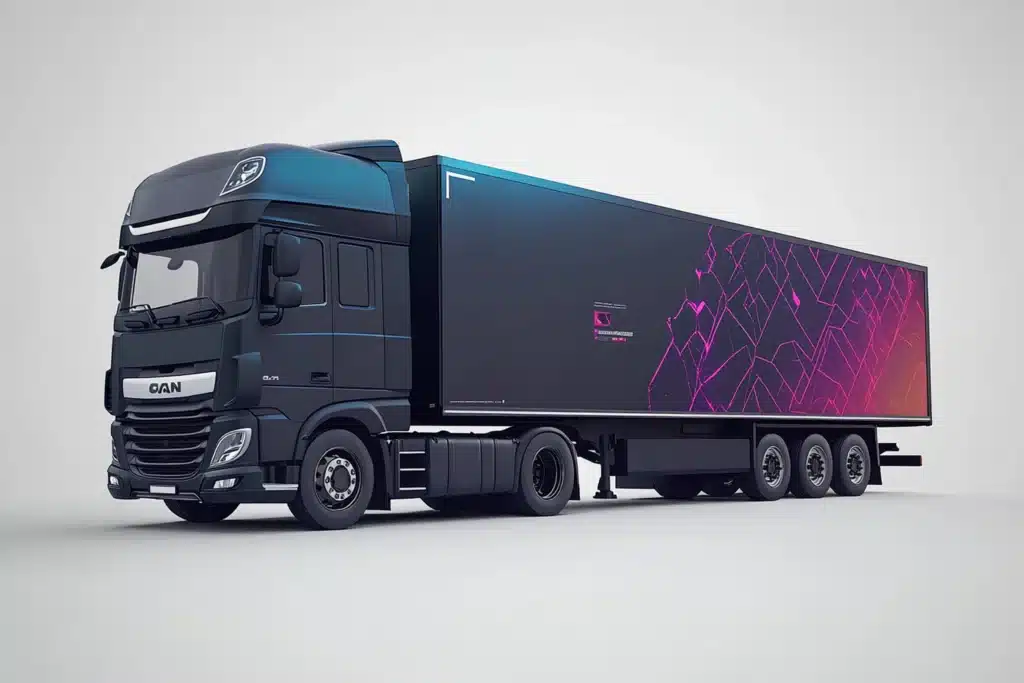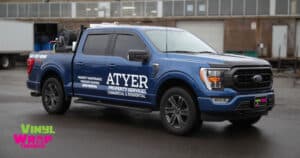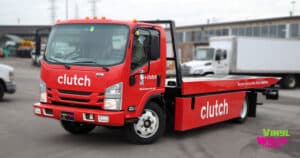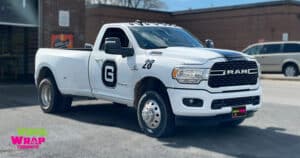
In the world of mobile advertising, vehicles have evolved into moving billboards whether they’re trucks rolling through the streets of Etobicoke, Mississauga, Brampton and Vaughan, or boats and trailers on the water or being towed across the GTA. At Vinyl Wrap Toronto, we often get asked: “Should I invest in custom boat/trailer decals or stick with truck decals?” The answer depends on your business type, routes, visibility and budget. In this post we’ll compare boat & trailer decals with traditional truck decals, explore key pros & cons, offer practical tips for each use-case, and help you decide how to turn every mile (or nautical mile) into advertising while you work.
Why Decals Matter for Boats, Trailers & Trucks
Whether on land or water, decals transform work vehicles into brand ambassadors. Some relevant stats:
- Branded vehicles reportedly generate 30,000-70,000 impressions per day.
- Cost-per-thousand impressions (CPM) for fleet graphics can be as low as US$0.15 compared to many digital or traditional media.
- Vehicles—trucks, trailers, boats are always moving, so they reach people where static ads cannot.
These metrics apply whether you’re hauling equipment on a trailer across the GTA or docking a branded boat in Lake Ontario. But the environments and practicalities differ—and that’s where we dig deeper.
The Key Differences: Boat and Trailer Decals vs. Truck Decals
| Feature | Boat & Trailer Decals | Truck Decals (GTA – Etobicoke/Mississauga/Brampton/Vaughan) |
|---|---|---|
| Environment & Exposure | On water or being towed; may be parked in marinas, waterfronts, boat ramps | Urban & suburban roads, routes through the GTA, job-sites, driveways |
| Surface & Material Requirements | Marine-grade vinyl, UV/saltwater resistance, curved hulls, trailers with different materials | Automotive grade vinyl; road salt, debris, curved truck panels |
| Route & Visibility | Water routes, boat launches, trailer-haul on highways | Daily routes, local jobs, parking in high-visibility zones in GTA |
| Audience Reach | Audience may be event-based, waterfront dwellers, recreational boat traffic | Broad reach: commuters, residential neighbourhoods, business districts |
| Cost & ROI | Slightly higher material/installation cost for marine environment; fewer daily impressions in some cases | Strong ROI due to high impressions and frequent traffic in GTA |
Why the Differences Matter
For example, a branded boat trailer parked at a high traffic launch in Mississauga may get excellent niche exposure when it’s there, but may not be constantly seen. Meanwhile a branded service truck in Brampton or Vaughan doing multiple runs and stopping at build-sites averages thousands of impressions each day.
On the flip side, a high-end marine business might benefit more from the prestige of marine decals—when tractors, trailers and boats themselves become part of the brand experience.
Practical Tips for Each Use-Case
Tips for Boat & Trailer Decals
- Use marine-grade vinyl and laminate: Saltwater, UV exposure and tow-haul conditions demand top quality materials.
- Design for both towing and stationary display: The decal should look good when trailer is parked at a waterfront or being hauled down a GTA highway.
- Include contact and service message: For mobile advertising, include logo, website, phone and short value statement.
- Consider trailer sides + back-door/rear panel: Trailers being towed often show the rear to highway traffic—prime decal real-estate.
- Maintain visual quality: Wash away salt, clean the trailer after haul, inspect for edge-lift or peeling.
Tips for Truck Decals in the GTA
- Bold, readable graphics: Use high-contrast colours, simple fonts so your message registers in 2-3 seconds.
BannerBuzz - Prioritise high-impact real estate: Side panels, tailgate (often parked view), doors.
- Durable materials for urban/suburban conditions: Road salt, gravel, parking lot collisions—ensure vinyl can withstand.
- Consistency across fleet or vehicles: If you have multiple trucks across Etobicoke, Brampton, Mississauga—consistent design builds recognition.
- Track impact: Use unique phone/URL on truck graphics to see leads generated via mobile billboard.
When One Might Be Better than the Other
- If your business primarily uses trucks or vans servicing the GTA suburbs (Mississauga, Vaughan, Brampton), then truck decals provide maximum daily exposure.
- If you run a marine-service business, boat-rental, marina operation or trailer-haul business, then boat/trailer decals provide niche prestige + targeted exposure.
- For businesses using multiple assets (trucks, trailers, boats), a hybrid approach may work best—consistent branding across trucks + trailers + boats ensures your brand is everywhere.
- Budget-wise: the truck decal route often gives lower cost-per-impression given frequency and routes; boat/trailer decals might cost more per impression but serve brand positioning better.
Case Data & Industry Insight
- According to fleet-graphics research, a single vehicle can generate up to 12 million views per year.
- Fleet graphics (which includes trucks) had CPM as low as US$0.15—far better than many digital ad CPMs.
- Vehicle decals are considered a form of mobile billboard (“truckside advertisement”) with among the lowest CPMs in OOH advertising.
Apply this to your asset: If a branded trailer or boat is used occasionally, your impressions may be lower; if a truck is used daily in a busy suburban GTA route, its effective CPM and exposure climb fast.
FAQs
Can decals designed for a truck be used on a boat or trailer too?
Possibly yes but you must adjust for materials (marine grade vinyl), surfaces (hull curvature, trailer doors) and exposure (water vs road). It may require different print/laminate specs.
Are boat/trailer decals more expensive than truck decals?
Often they are, due to tougher material requirements, custom shapes and potentially lower volume of impressions. But cost must be viewed in terms of brand-fit and target audience.
Does a branded trailer still count as mobile advertising if it’s parked?
Yes parked assets still contribute to impressions, especially in high-traffic locations like marinas, launch ramps, highway stops or job-site lots.
How do we track the leads generated by decals vs digital ads?
Use unique phone numbers or URL landing pages displayed in your decals. Ask customers how they found you. Combine with route-analytics for local tracking.
Should I switch entirely from digital ads to vehicle/trailer decals?
Not necessarily. The ideal is a hybrid strategy: digital ads for targeting & fast campaigns; decals/truck/trailer graphics for 24/7 brand presence and mobile visibility.
Conclusion
Boat and trailer decals, and truck decals each offer powerful mobile advertising opportunities but they serve different use-cases, routes and audiences. If you operate across the GTA (Etobicoke, Mississauga, Brampton, Vaughan), and your vehicle assets are largely trucks doing daily runs, truck decals Toronto may deliver the highest impressions per dollar. If your business uses trailers, boats or operates near waterfronts, then custom decals for boats & trailers can elevate your brand awareness and lend prestige.
Ready to make your truck (or fleet) stand out on Toronto’s roads? Reach out to
Vinyl Wrap Toronto at
416-746-1381 or
email info@vinylwraptoronto.com.
Let us help you design custom truck decals that reflect your brand, attract attention and deliver performance across the GTA. And remember if you need coordinated signage or apparel, our sister companies
Branding Centres and
Work Wear Toronto have you covered.




